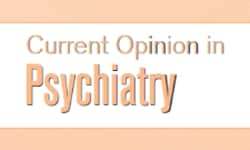
OBJECTIVES:
To compare the antidepressant-like response induced by cannabidiol in adolescent and adult rats and the possible parallel modulation of hippocampal neurogenesis.
RESULTS:
Cannabidiol induced differential effects depending on the age and dose administered, with a decreased sensitivity observed in adolescent rats: (1) cannabidiol (30 mg/kg) decreased body weight only in adult rats; (2) cannabidiol ameliorated behavioral despair in adolescent and adult rats, but with a different dose sensitivity (10 vs. 30 mg/kg), and with a different extent (2 vs. 21 days post-treatment); (3) cannabidiol did not modulate anxiety-like behavior at any dose tested in adolescent or adult rats; and (4) cannabidiol increased sucrose intake in adult rats.
CONCLUSIONS:
Our findings support the notion that cannabidiol exerts antidepressant- and anorexigenic-like effects in adult rats and demonstrate a decreased potential when administered in adolescent rats. Moreover, since cannabidiol did not modulate hippocampal neurogenesis (cell proliferation and early neuronal survival) in adolescent or adult rats, the results revealed potential antidepressant-like effects induced by cannabidiol without the need of regulating hippocampal neurogenesis.”
https://www.ncbi.nlm.nih.gov/pubmed/32086540
https://link.springer.com/article/10.1007%2Fs00213-020-05481-4

 “Cardiovascular complications are the major cause of mortality in diabetic patients. However, the molecular mechanisms underlying diabetes-associated arrhythmias are unclear.
“Cardiovascular complications are the major cause of mortality in diabetic patients. However, the molecular mechanisms underlying diabetes-associated arrhythmias are unclear. “The most recent studies published or initiated in the last 18 months, investigating cannabidiol in the treatment of symptoms of schizophrenia and related conditions are summarized, including observed tolerability and reported side-effects.
“The most recent studies published or initiated in the last 18 months, investigating cannabidiol in the treatment of symptoms of schizophrenia and related conditions are summarized, including observed tolerability and reported side-effects. “To determine whether differences in disability status, spasticity severity, and spasticity duration at treatment start in patients with resistant multiple sclerosis (MS) spasticity might influence response to add-on tetrahydrocannabinol:
“To determine whether differences in disability status, spasticity severity, and spasticity duration at treatment start in patients with resistant multiple sclerosis (MS) spasticity might influence response to add-on tetrahydrocannabinol: “Radiotherapy combined with chemotherapy is the major treatment modality for human glioblastoma multiforme (GBM). GBMs eventually relapse after treatment and the average survival of GBM patients is less than two years.
“Radiotherapy combined with chemotherapy is the major treatment modality for human glioblastoma multiforme (GBM). GBMs eventually relapse after treatment and the average survival of GBM patients is less than two years. “Highly purified
“Highly purified  “In this report, we present a case of a 16,9-year-old patient with multiple substance use disorder (
“In this report, we present a case of a 16,9-year-old patient with multiple substance use disorder ( “Patients with non-small cell lung cancer (NSCLC) develop resistance to antitumor agents by mechanisms that involve the epithelial-to-mesenchymal transition (EMT). This necessitates the development of new complementary drugs, e.g.,
“Patients with non-small cell lung cancer (NSCLC) develop resistance to antitumor agents by mechanisms that involve the epithelial-to-mesenchymal transition (EMT). This necessitates the development of new complementary drugs, e.g.,  “Novel anticancer medicines, including targeted therapies and immune checkpoint inhibitors, have greatly improved the management of cancers. However, both conventional and new anticancer treatments induce cardiac adverse effects, which remain a critical issue in clinic.
“Novel anticancer medicines, including targeted therapies and immune checkpoint inhibitors, have greatly improved the management of cancers. However, both conventional and new anticancer treatments induce cardiac adverse effects, which remain a critical issue in clinic. “Dravet syndrome (DS) is one of the most severe forms of drug-resistant epilepsy and available interventions fail to control seizures in most patients.
“Dravet syndrome (DS) is one of the most severe forms of drug-resistant epilepsy and available interventions fail to control seizures in most patients.